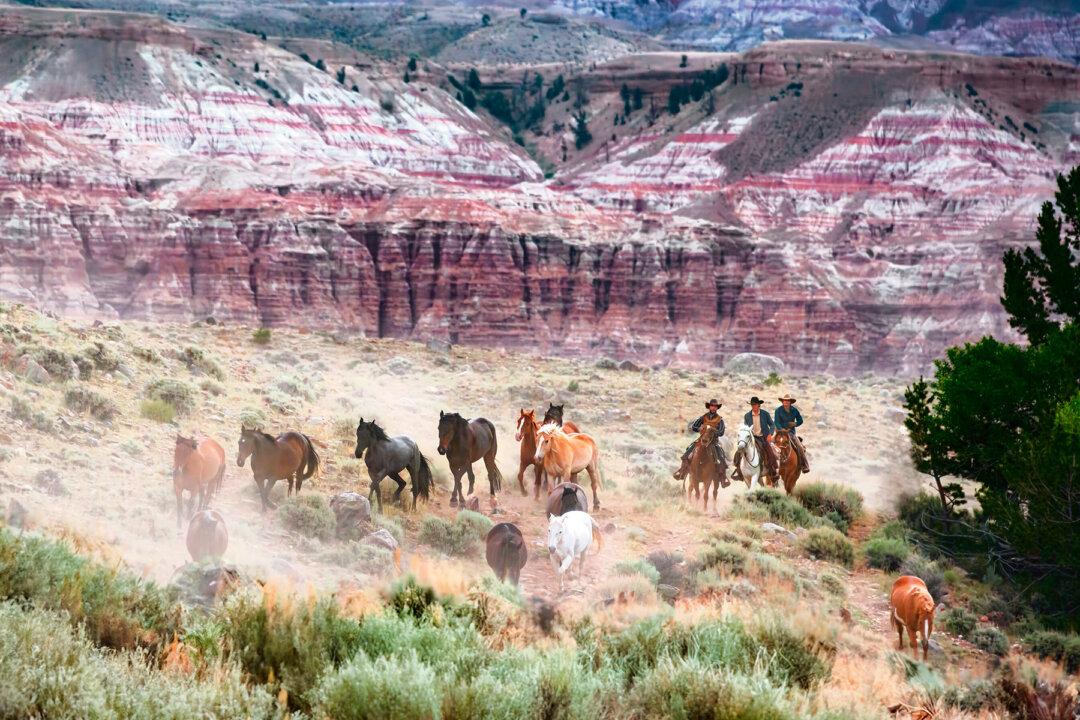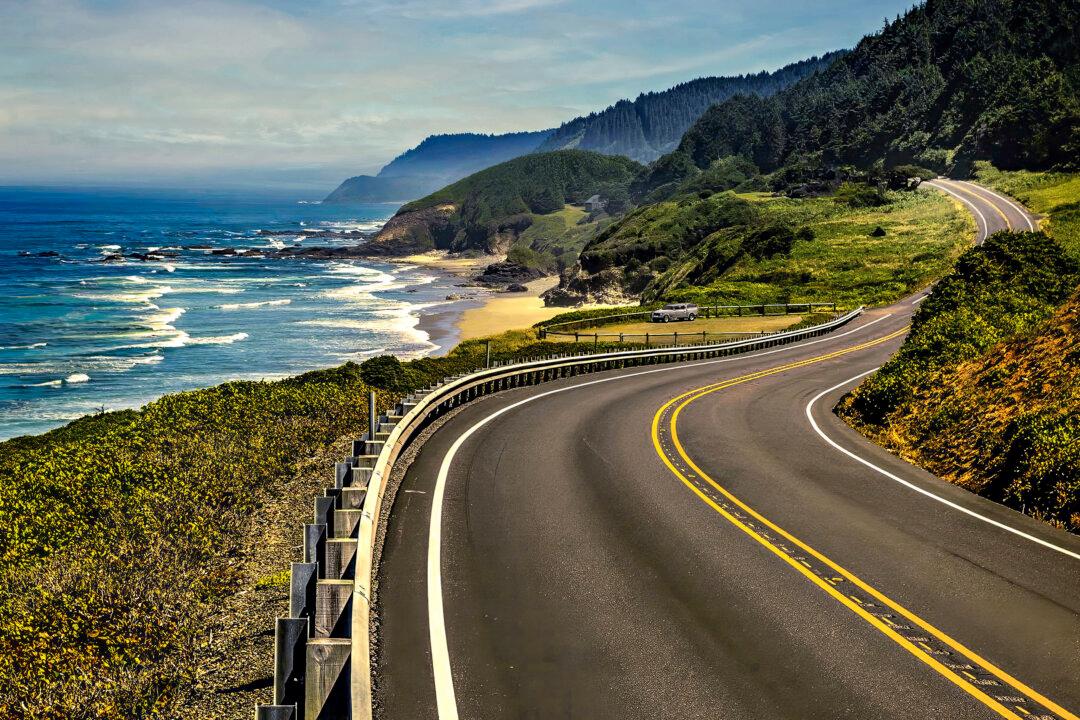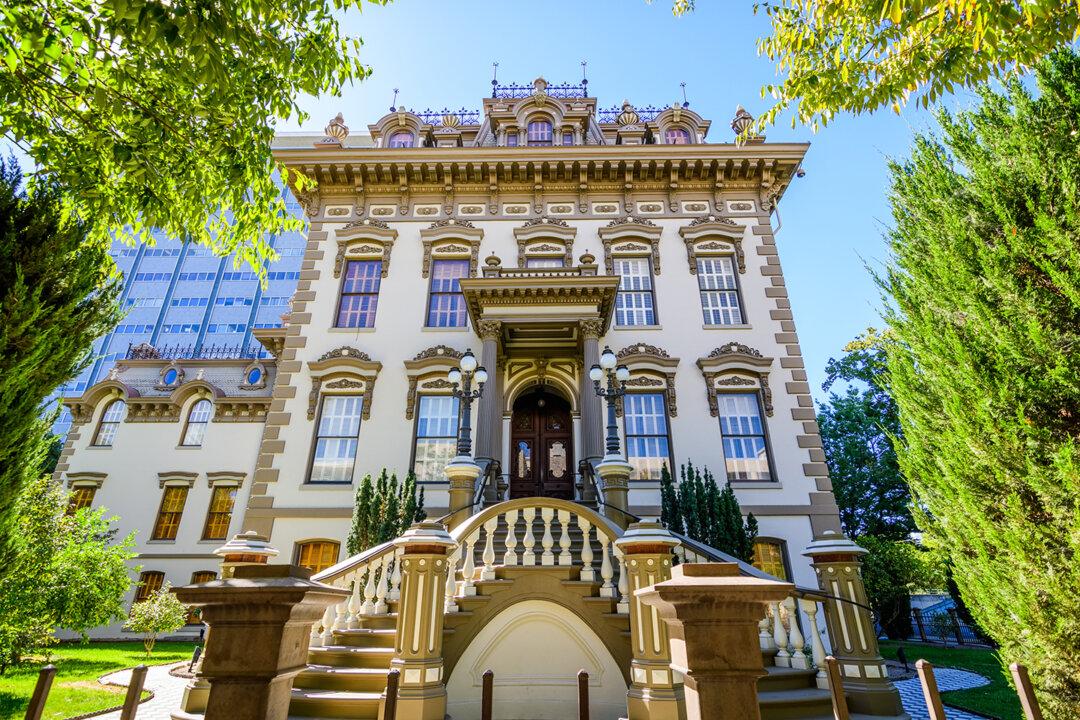William Randolph Hearst’s cinematic castle straddles a craggy crest, shimmering in the sun or floating above the fog. Begun in 1919 and never completed, it is as enigmatic as he was. A magnet for Hollywood headliners during the 1920s and 1930s, today about 750,000 visitors are attracted annually to the opulent extravagance of the extraordinary estate. They marvel at the ornately decorated and furnished 115-room mansion and the three grand guest cottages reigning over a crown jewel coastline. Poet George Bernard Shaw quipped, “It was the place God would have built—if he had the money.”
Hearst Castle is located on Highway 1 along the central coast of California, halfway between San Francisco and Los Angeles, about a four-hour drive from either. Before the road’s completion in 1937, it was an arduous adventure.
Most guests hopped on a train from L.A. to San Luis Obispo and then caught a cab to San Simeon, enduring the 40-mile rough and rutted road along the rugged coast. A few disembarked at the bay pier or landed, like Howard Hughes, at the private airfield.

Journalism Juggernaut
William Randolph Hearst, who lived to see the dawn of the atomic age, was born in San Francisco before the Battle of Gettysburg in 1863. His father, George, was a rough-and-ready prospector and shrewd mining investor who first struck it rich in Nevada’s Comstock Lode. His mother, Phoebe, was an intellectually curious schoolteacher who doted on their only child, Willie. She opened his eyes to the wider world through trips with her to Europe, where at age 10 he first became enamored with historic art and antiques.The coddled and spendthrift boy grew into a pestilent enough prankster to get thrown out of Harvard. But by then he had found his vocation: journalism. In 1887, his father, now a U.S. senator, relented to his pleadings and made him publisher of the San Francisco Examiner. The 24-year-old quickly turned the flagging daily’s fortunes around, through reformist investigative reporting and lurid sensationalism.

Hearst skipped coasts eight years later and picked up the New York Journal, going head-to-head with Joseph Pulitzer and his New York World in what became known as the yellow journalism circulation war. The Journal readership soared as he splashed starlets and scandals across the banner headlines. By the late 1920s, he had built the nation’s largest media empire, gobbling up 28 major newspapers and 18 popular magazines, along with a handful of radio stations, several news services, and a movie studio.
The man who changed the face of American journalism was tall and muscular, energetic and enthusiastic, commanding a limp handshake and a high voice “like the fragrance of violets made audible,” longtime Examiner contributor Ambrose Bierce put it. A biographer described “a shy man who was most comfortable in crowds; an autocratic boss who could not fire people; a Californian who spent half his life in the East.”

Hollywood Hostess
In 1917, Hearst fell for a Ziegfeld Follies chorus girl named Marion Davies, who became his steadfast companion and whose successful comedic movie career he orchestrated. A charming hostess, she was, like many of her peers, a parvenu actress with little formal education and no training in social etiquette; she was acclaimed for choreographing the castle’s lavish dinner parties and flamboyant masked balls.It was said in Hollywood’s Golden Age that there were two sets of celebrities: Those who had been to Hearst Castle, and those who said they had been to Hearst Castle. The invitation was coveted not only by movie idols such as Cary Grant and Greta Garbo, but also by literary luminaries such as George Bernard Shaw, world leaders such as Winston Churchill, and aviators Charles Lindbergh and Amelia Earhart. The generous and gracious host liked to corral “tender-footed men and tender-bottomed women of the silver screen” into horseback riding on the 250,000-acre spread. Clark Gable, tired and sore from a strenuous day in the saddle, allegedly grimaced as he wisecracked to Gary Cooper, “When we get to the next brow of a hill, we'll see Los Angeles.”

Academy Architect
As a child, Willie often went with his parents to what was then called “Camp Hill.” In 1919 at age 56, he envisioned more comfortable vacation accommodations for his socialite wife, their five sons, and himself. While waiting to move into Casa Grande, they stayed in the first completed cottage, the courtyard Casa Del Monte, during their brief summer stays in 1921 and 1922, and the much larger 5,350-square-foot Casa Del Mar over the next several years. Millicent became so exasperated by her husband’s open liaison with Davies that she separated from him in 1926, a year before the private quarters in the primary residence were ready. She remained in New York City and rarely visited San Simeon.When Hearst first met with his architect, he reportedly said, “Miss Morgan, we are tired of camping out in the open at the ranch in San Simeon, and I would like to build a little something.” William Randolph Hearst was the visionary, and Julia Morgan brought that vision to life. They worked hand-in-hand for 28 years designing and building the estate.
Construction of the castle compound was a Herculean undertaking. All the equipment and materials were shipped to the isolated seaside hamlet then hauled up the winding five-mile dirt road rising 1,600 feet and navigating rocky outcroppings and steep canyons to the hilltop building site. Initially, Hearst dedicated himself to the project only during summers. But by 1924, he’d decided to take it on year-round.
Like her client, Morgan was a demanding workaholic who lived on coffee and chocolate bars. From her photographs, she looks like a timid soul. Owlish spectacles overshadow her facial features, and her diminutive figure appears fragile, belying an iron will and enormous energy. Morgan earned a degree in engineering from the University of California at Berkeley in 1894. Subsequently, she succeeded in a two-year struggle to become the first woman to study architecture at the prestigious Ecole des Beaux-Arts in Paris and would become the first licensed female architect in California.

Palatial Pools
Creating park settings and spacious patios on the precipitous slopes required endless steps and terracing. Even if you don’t know a weed from a wisteria, a stroll through the resplendent gardens is a sensory delight of colors and scents that might even miraculously tantalize the mythical marble figures poised about the grounds. There is always something in bloom—bowers of magenta bougainvillea and vibrant hyacinths, and rhododendrons with blossoms as big as wedding bouquets. Another hillside attraction was the largest privately owned zoo in the world.In the margin of Morgan’s notebook, Hearst scribbled, “This should be a very romantic spot, a place for young lovers—and maybe old ones.” For the site, the architect designed the magnificent Neptune Pool. It emphasizes a classical temple façade atop six ancient Roman columns that support a 17th-century statue of the sea god. Developed over 14 years in three different versions, the 104-foot-long oval basin and 95-foot-wide alcove is fed by a small waterfall. By day, the pool’s curved marble colonnades frame far-reaching views of the ocean and mountains. By night, they form spectacular floodlit reflections in the still water that create the image of a “grand liquid ballroom, for the gods and goddesses of the silver screen.”
The Roman Pool is intricately decorated from floor to ceiling with hand-cut, handset one-inch-square blue or fused-gold glass tiles. Mosaics found in the fifth-century Mausoleum of Galla Placidia in Ravenna, Italy, inspired the patterns that are illustrative of traditional marine monster themes depicted in an ancient Roman bath. It took five years to complete the tile work to Morgan’s satisfaction. “When we first started setting the mosaic, Miss Morgan said it looked too perfect,” a tile setter recalled. “She wanted us to find a way to make it look older.” They punched their fists into newly laid mortar causing small depressions to change the smooth face of the mosaic, which had the desired effect.

Magnificent Manor
The centerpiece of the complex is the 68,500-square-foot Casa Grande that Hearst never referred to as the castle. To him, it was La Cuesta Encantada, the Enchanted Hill, or simply the ranch. The Mediterranean Revival style suggests a Spanish cathedral with its twin bell towers and ornate motifs. The main entrance is flanked by bas-reliefs of knights, and a sculpture of Mary holding the infant Jesus is set in a niche above the massive door.The Hearst Corporation donated the 127-acre property to the state of California in 1958. Daily tours are offered of the castle’s “Grand Rooms,” where Hearst entertained his guests. Those of the upstairs suites, as well as the cottages and kitchen, give a more intimate view of the household. The rooms were planned in a pastiche of styles and eras to adhere to their sculptures and paintings.
The 2,498-square-foot Assembly Room is where guests during the Roaring Twenties and the Great Depression would chit chat and sip cocktails while waiting for dinner to be served in the adjacent dining room. The walls are lined with walnut paneling and Renaissance and Baroque tapestries from the 16th century. Neoclassical marble statues brighten the corners, and bronze sculptures sit on large tables. The jigsaw puzzles, poker table, and overstuffed chairs show that the room was also a place to hang out and relax.

Hearst called the dining room the Refectory. Its high windows, bright silk banners, and gleaming silver candlesticks convey the atmosphere of a medieval cathedral. This was juxtaposed with table settings of camp china, heavy antique silverware, and paper napkins. Everyone reached around crystal goblets to get to the mustard and ketchup bottles in the center of the table. Movies in the plush theater often followed dinner.
Final Farewell
William Randolph Hearst and Marion Davies left La Cuesta Encantada together in 1947 to seek medical care for him. They never returned.The couple moved into her home in Beverly Hills, where Hearst died four years later at age 88. He bequeathed controlling interest in the Hearst Corporation to his loyal leading lady. Claiming that the only thing she wanted from the relationship was love, Davies sold her inheritance to his family for $1—a Hollywood ending to a love story set against a celebrated castle that stands as the remarkable achievement of one man’s dream.







